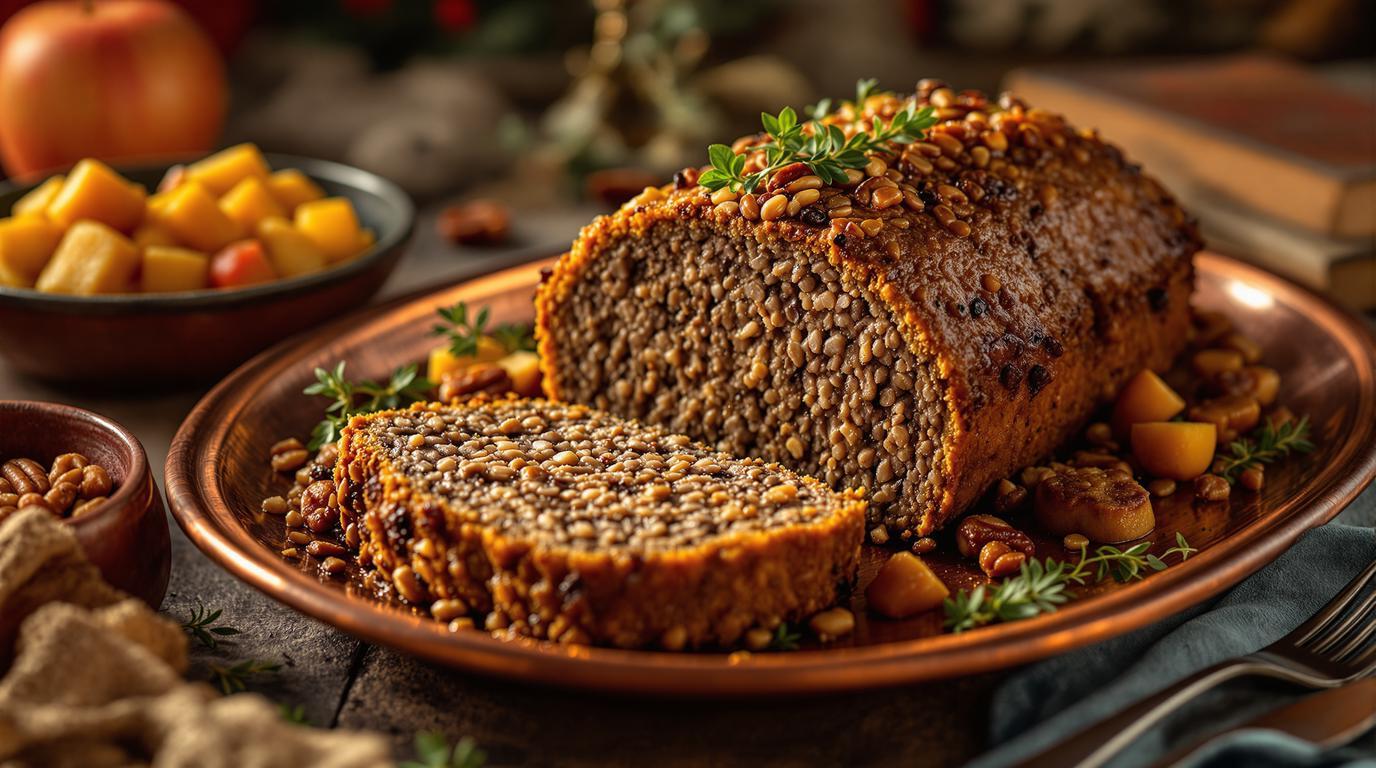There’s something profoundly comforting about transforming humble ingredients into a meal that honors tradition while embracing modern sensibilities. When my grandmother would make her famous brisket, the house would fill with aromas that seemed to wrap everyone in a warm embrace. Today, I’m sharing my plant-based interpretation that captures that same soul-warming essence without any animal products – perfect for comparing energy levels between classic and plant-based versions of this beloved dish.
The Soul of Jewish Plant-Based “Brisket”
Growing up in a Jewish household, I learned that brisket wasn’t just food – it was the centerpiece of celebration, a testament to patience and love. This vegan version honors that tradition using nature’s umami powerhouses: lentils and mushrooms. The slow braising method mirrors the traditional technique, allowing flavors to meld beautifully while creating a surprisingly meaty texture that satisfies even the most dedicated carnivores.
What makes this recipe special is how it recreates not just the flavor but the experience of traditional brisket – that tender, sliceable quality that soaks up sauce and pairs perfectly with traditional sides like silky morning porridge for a complete meal.
Essential Ingredients
For the “Brisket” (serves 6):
- 1 cup (200g) dry beluga or green lentils
- 12 oz (340g) shiitake mushrooms, minced
- ¾ cup (90g) walnuts, finely chopped
- 1 large red onion, minced (about 1 cup)
- 3 garlic cloves, minced
- 2 tablespoons tomato paste
- 2 teaspoons smoked paprika
- 1 teaspoon ground cumin
- 3 tablespoons tamari (or soy sauce)
- 2 cups (480ml) red wine or vegetable broth
- 2 tablespoons olive oil (try this Sicilian olive oil magic for extra flavor)
- Fresh thyme (optional)
- Salt and black pepper to taste
For the apple-pecan charoset:
- 2 medium apples, peeled and diced
- ½ cup pecans, chopped
- ⅓ cup raisins
- 1 tablespoon lemon juice
- 1 teaspoon ground cinnamon
- 1 tablespoon maple syrup or agave
Creating Your Vegan “Brisket”
- Prepare lentils: Rinse lentils thoroughly. Cook in 3 cups water, simmering gently for 20–25 minutes until tender but not mushy. Drain and set aside.
- Create the flavor base: Heat olive oil in a large skillet over medium heat. Add minced onion and garlic; sauté until translucent (about 5 minutes). Add minced shiitake mushrooms and cook until browned and moisture evaporates (7–10 minutes).
- Build layers of flavor: Stir in smoked paprika, cumin, and tomato paste; sauté for 1–2 minutes until fragrant. This step is crucial for developing depth – don’t rush it!
- Combine and season: Add chopped walnuts and cooked lentils; mix thoroughly. Pour in tamari and red wine (or broth). Stir well, add thyme if using, and season with salt and pepper to taste.
- Braise to perfection: Transfer mixture into a loaf pan or shape into a loaf on a baking dish. Cover tightly with foil. Braise in a preheated 300°F (150°C) oven for 60-75 minutes until firm and flavors have melded.
- Prepare charoset: While the “brisket” cooks, gently toss apples, pecans, raisins, lemon juice, cinnamon, and maple syrup in a bowl. Refrigerate until serving.
Chef’s Note: The magic happens in the browning of mushrooms – don’t crowd the pan and let them develop a deep golden color. This creates the natural umami that gives this dish its satisfying “meatiness” without any animal products.
Serving Your Creation
Allow your “brisket” to rest for 15 minutes before slicing – just as you would with traditional meat. This helps it hold together beautifully. Serve warm, garnished with fresh herbs alongside the apple-pecan charoset. For a complete feast, pair with roasted carrots or potatoes, or consider trying it with this Italian lentil bolognese for a fusion approach.
For a creative cross-cultural experience, consider serving your vegan brisket with these cloud-like bao buns – the tender “meat” works surprisingly well in this fusion context.
What I love most about this recipe is how it respects tradition while embracing innovation. When my skeptical uncle – a dedicated meat lover – requested seconds, I knew this recipe had captured something special. While no plant-based dish can perfectly replicate meat, this version honors the spirit of grandmother’s cooking: transforming simple ingredients through time and technique into something deeply nourishing and satisfying. Whether you’re vegan, reducing meat consumption, or simply curious about plant-based cooking, I hope this recipe brings warmth and connection to your table – just as all the best family recipes do.
